Sport in India is on the move,but it needs to be a movement: Sanjay Gupta
"Sports is witnessing a massive surge today. A sector which until a few years ago was in the doldrums," exclaimed Sanjay Gupta, MD of Star India and Chairman, CII National Committee on Sports as he addressed the audience at the third edition of the Confederation of Indian Industry (CII) Scorecard 2017. Gupta, while speaking at the event held in New Delhi, emphasized on how sports in india is not only limited to cricket today but has gone far beyond.
He said, "I remember 5 years ago, when Star got into the business of sports, the number of conversations just answering the question, why? Everyone used to be tentative around associating with and investing in the business of sports. And understandably so. The traditional wisdom was that this industry has nothing to offer, it will struggle with dilapidated infrastructure, little funding and almost no focus from any stakeholder. And just look at how far we have come!"
Gupta asserted that If you were at the Kochi stadium last year at ISL’s final, you could experience this new excitement first hand. The 60,000 strong stadium was packed to the hilt two hours before the match was even supposed to begin. And at one point in the match, when a local boy scored a goal, there was so much excitement that the entire stadium started shaking! He added, "I faced such a surreal experience myself during the first season of the Hockey India league. I was at Ranchi for the final, and imagine my surprise when I found that a stadium capacity of 7,000 wasn’t enough for the crowd that had gathered to watch the match. They had to actually hire a 15,000 strong football stadium next door and put up big screens there to get the people of Ranchi to feel that excitement firsthand.
He opined that cricket – the mainstay of sport in this country has actually gone from strength to strength. There are more tournaments and newer players coming in. From IPL, to now local leagues in Tamil Nadu and Karnataka, cricket has become more local than ever. And most importantly, this new young team, both men and women, has brought a fresh zeal to the game. The viewership of cricket today is at an all time high. The 2017 Champions Trophy was watched by 42 crore Indians! This is 2.5 times the number of people who voted for the largest party in the 2014 Lok Sabha elections.
He added, "Every morning as I step out of my home in Mumbai, I see hundreds of people running. I am sure each one of you experience the same in Delhi, Bangalore, Hyderabad, Chennai, Kolkata and many large and small citifies. Each of these runners are training for marathons, half-marathons, 10k runs, 5k runs! Today, I believe there are more than 3,000 organized events, almost 10 events per day where people are running marathons or half-marathons. Who would have thought that in a country where fitness is not a big priority, running – not for recognition, not for a medal – could become so popular? And this is despite having no running tracks, and in most cases, no pavements. But people are finding a way, running on tar roads, on dusty maidans, just to follow their passion or be fit."
He remembered when Star was trying to kick start the kabaddi league, the kind of challenges that faced were quite bizarre. "Although this sport already had a strong following in states like Punjab and Haryana, we couldn’t add teams from those states just because they didn’t have a single indoor stadium to host any matches! There were almost no professional trainers, coaches, technical crew, commentators – it seemed like a bottomless pit. And look at where the sport is today. It has become the second biggest sport of the country. But even bigger is the fact that kabaddi players are feted and recognized, and their stories have found their way into every corridor conversation!" he said.
This isn’t an isolated example – almost all the leagues today, from hockey to football to wrestling to badminton – their starting point has been pretty much the same. And they have all managed to find a place for themselves with the people of this country. People are watching them in their homes on TV or on their mobile phones on their daily commute on buses, local trains, and taxis. In fact, even within sports the lingo has changed – people no longer only talk about runs and wickets, they are talking about raids, goals, points and rounds too!
Gupta feels what’s even more heartening is how this whole movement is creating value across the ecosystem and becoming more & more self-sufficient. More and more brands are now starting to ascribe real value to the impact that they are delivering. When Star was going to launch the first season of Pro Kabaddi League, he remembered having a conversation with the head of a company and asking them to put money on kabaddi and telling him about the potential of the sport. However, there was little belief that any sport beyond cricket will ever take off in a country like ours. Today, I am proud to say that our partner Vivo is putting in mega multi million dollars on kabaddi for the next five years. This deal is the second largest sports sponsorship in the country after IPL.
This is the logic-defying leap that sport has taken – despite no change in our infrastructure, or public funds. What we see today is the power of young, enterprising India giving sports a new lease of life.
"Each and every one of these leagues that I was talking about have been created not on the back of policy or public funding, but by a bunch of young, enterprising people – people sitting in this room – coming together. All of them – businessmen, entrepreneurs, league owners, team owners, bankers, media – have put in staggering sums of money and collaborated with and in many instances, created a whole new set of entities to build viable and scalable business opportunities. They have overcome all these traditional roadblocks – both in the mind and on the ground."
And above all, this has been powered by young, passionate and committed players. Look at the face, or faces, of today’s sport. We are living in the era of a Kohli, a Sindhu, a Nitin Tomar, a Dipa Karmakar, a Srikanth Kidambi, a Mohammed Rafi. They are today actively choosing to take up sport as a serious profession, inspiring millions of kids.
We often talk about the power of India’s demographic dividend. This is one sector where we see the power of the young changing the fortune of sports. The sports sector is definitely on the move.
So does this mean this is it, our jobs are done?
Gupta said, "Absolutely not! Let whatever I have said not hide the reality of the challenges we continue to face. Despite this glitz and glamor of viewership and money, the reality remains that sports as an industry is just at a $2.5 bn size today. Whereas in a country like US, this sector is over $80bn! We have all been celebrating the leagues that have come up, but again – US has more than 30,000 league games happening in a year and we aren’t even at a 1/50th of that number."
Why does such a gap exist? What trick are we missing here? Are the reasons the same, oft-repeated issues of infrastructure, training, coaches or funds?
According to Gupta, the real problem isn’t there. We have reached the size of $2.5bn just on the back of just about 10% of young kids playing and participating in sports. Our youth has shown us across sectors that they have the power to compete with the best in the world. The field of IT is a great example. This opportunity in IT came through because of millions of our young kids experiencing maths and science in their early years, and many of them going on to pursue engineering as a profession. This is how we managed to form a pool of high quality talent in the country – which has and continues to create top CEOs even in the Silicon Valley.
He further said, "But compare this to the way our kids participate in sporting activity. In a recent survey done across the country, we found that kids in India on an average play 20 to 30 mins in a week. This means that they spend 3 to 5 mins in a day playing sport. Compare this to kids of the same age in more developed markets like US and Europe who play roughly an hour a day. Herein lies the problem."
Is it that kids in India are physiologically so different that they don’t have a desire to play? Of course not! What is coming in their way is our mindset – the mindset of parents, the mindset of schools and the mindset of businesses.
Taking a dig at the new age societal culture, Gupta observed that the narrative in our society, parents & communities has always been that academic study is the only pathway to success and play is a waste of time. Parents in this country right now look at education as a means to a better life. And playing is okay only until it doesn’t interfere with their academics. He added, "What we don’t realize is that today, academics alone is no longer a guarantee to success. Sports is equally important and needs to accompany and complement formal education to power success."
He further stated that our educational system is no better. They assign sport the status of an “extracurricular activity” which is a euphemism for dispensable activity. Most schools’ curriculums have no place for sports in them, aside from this subject esoterically named “physical education”, and many of the students that I talk to these days consider that to be a free period, meant as a break to kids. Even teachers encourage kids and parents to let go of sport to focus on academics. If that wasn’t enough, most schools lack the facilities, infrastructure and trained professionals required to play. And even if they do, in a lot of cases they are not available to students as they have been leased out for weddings and carnivals!
Let alone the social narrative – the thinking in businesses is no different. In this country, large corporates are investing a sizeable part of their profits into CSR activities. But despite promotion of sports now coming under the ambit of CSR, sports have barely seen any interest or support from corporates.
"For all of us as parents, school administrators, leaders across businesses and for society at large, sports is way down in the pecking order. And this is the core of the problem – this is why kids in our country don’t play. Let alone unleashing, we have not even understood the power of sport as a society," he said.
Our respected Prime Minister has talked about the importance of sport in Mann ki Baat and multiple other forums – about how critical sport is not only for physical well-being, but overall development of an individual, how it can serve as a means of national integration. How sports teaches people these critical attributes: Skill, Perseverance, Optimism, Resilience, Tenacity and Stamina. How it is important for every child to play every day and sweat.
Sports has the power to inspire, to unite, to teach us things the way nothing else possibly can. This is the power we need to unleash. For that,we need to get 30 cr. kids to play for at least an hour every day!
This is certainly not an easy task. We need to challenge the current mindsets of parents, schools and businesses. This is a mindset that has been shaped over many decades. It needs serious effort and it will take time.
But this isn’t even on anyone’s radar today – not the media, the federations, the policy makers or society at large. There is an initiative being run by the sports committee of CII where they are working with a group of 1000 schools, to redefine the perception of parents and school administration toward sports. But we can’t expect such initiatives alone to move mountains. Such a mammoth shift in mindset and behavior requires a movement.
There is a dire need for young, private enterprise to again come together and rally behind this one cause. Let us together unleash the power of sport in this country – get 30 cr. kids to play an hour every day. "Believe me, we are not being held back by infrastructure or facilities or training – only by our own imagination," Gupta concluded.





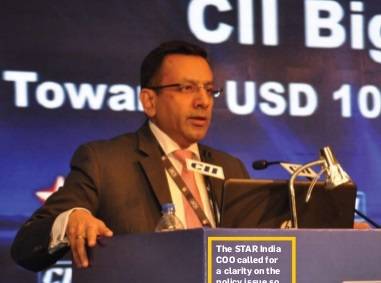

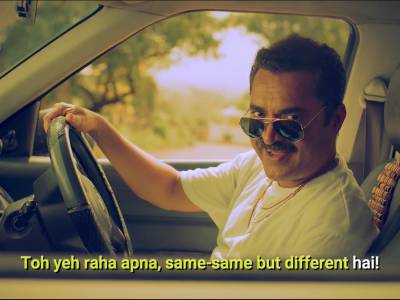


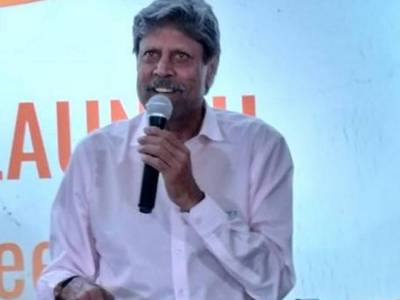
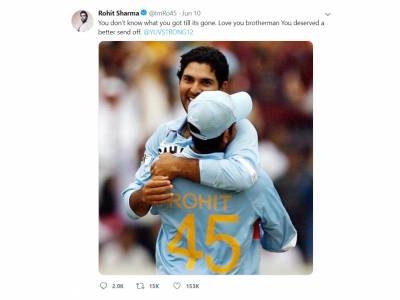



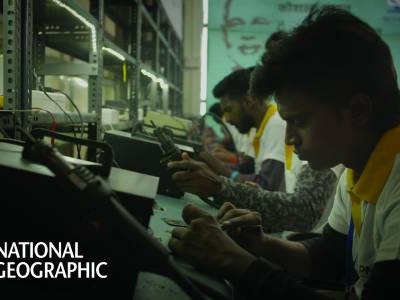





Share
Facebook
YouTube
Tweet
Twitter
LinkedIn